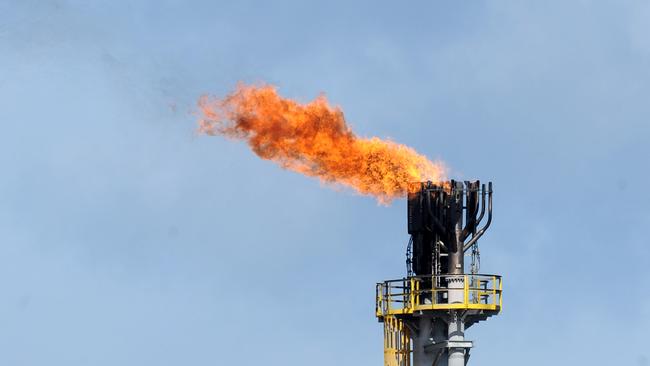ExxonMobil plots major carbon capture and storage project in Victoria’s Gippsland Basin
The US giant is undertaking early work for a facility in Victoria that can capture 2 million tonnes a year of carbon dioxide.

ExxonMobil plans to develop a major carbon capture and storage project offshore Victoria’s Gippsland Basin, the latest push by the oil and gas industry to boost its green credentials.
The US energy giant is undertaking early engineering and design studies for a potential facility that can capture 2 million tonnes a year of carbon dioxide with start up expected in 2025.
The scheme would use existing infrastructure to store carbon in the depleted Bream field off the coast of Victoria’s Gippsland Basin where Exxon already owns and operates a string of major oil and gas projects.
Exxon said it was in discussions with local industries interested in accessing the hub, known as the South East Australian carbon capture and storage facility.
“Collaboration with other industries is an important step to unlock future carbon capture and storage opportunities for Australia, with the potential for large-scale reductions in the highest emitting industrial sectors,” said Joe Blommaert, president of ExxonMobil Low Carbon Solutions. “Sound government policies will accelerate the deployment of key technologies required to support society’s ambition for a net-zero future.”
The potential carbon capture hub adds to gradual momentum from industry in backing the technology which has suffered from high costs and problems scaling projects to a sufficient level to make a dent in high emissions from the oil and gas sector.
Exxon owns a stake in Chevron’s troubled $2.5bn Gorgon carbon capture and storage project under WA’s Barrow Island which was forced to spend $40m on low carbon projects in Western Australia to meet a shortfall after failing to hit a five- year target burying enough carbon for its $US54bn ($74bn) Gorgon LNG project.
READ MORE:Chevron buys credits to offset Gorgon carbon shortfall | Exxon, once a sceptic, sees profit in capturing carbon emissions
Santos is seen as the frontrunner among Australian companies for developing carbon capture and storage. It is already devising a giant ‘‘carbon sink’’ scheme where it can offer energy operators the ability to strip out and bury carbon from their gas supplies at its Moomba hub in South Australia and is moving ahead on its Bayu Undan carbon capture and storage plan in the Timor Sea after signing a memorandum of understanding with the East Timor regulator.
Santos is also considering a third CCS hub based on its offshore WA operations.
The Morrison government has backed carbon capture and storage as one of the technologies that can help Australia meet net zero emission goals.
Exxon pledged a year ago it was time to turn capturing carbon emissions “into a real business” as it faced pressure from activists and investors to develop more green solutions for its legacy fossil fuel business.
The company last year launched a new business, Low Carbon Solutions, with plans to invest $3bn by 2025 to meet net zero emissions and climate goals outlined in the Paris agreement.
ExxonMobil was hit last year with a crackdown from the national environmental regulator over its ageing Bass Strait oil and gas fields offshore Victoria after being ordered to seal 180 wells and dismantle 10 platforms by 2027, underlining mounting concern over $50bn industry-wide clean-up bill.
Since the 1960s, Exxon has produced more than 4bn barrels of oil from Bass Strait, which at its peak was producing 500,000 barrels of oil a day, making it one of the world’s biggest producing regions.
Exxon now produces just one-tenth of the volume of oil it was pumping in the 1980s while its big legacy gas fields – Marlin, Barracouta and Snapper – are also on their last legs.
Although it remains eastern Australia‘s biggest gas player, its share of the market has fallen by about a third in the last few years sparking a costly hunt for new resources.
The company in March pulled the trigger on a $400m investment in expanding gas development in the Gippsland Basin in a move aimed at shoring up supplies for Australia’s southern states.



